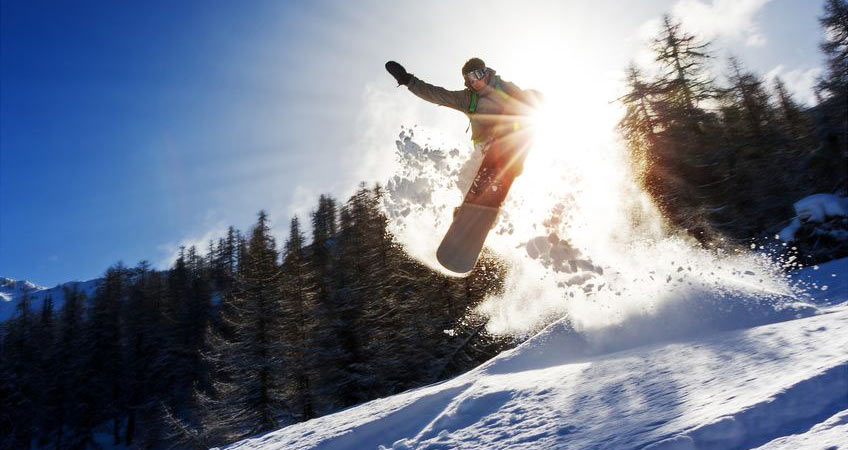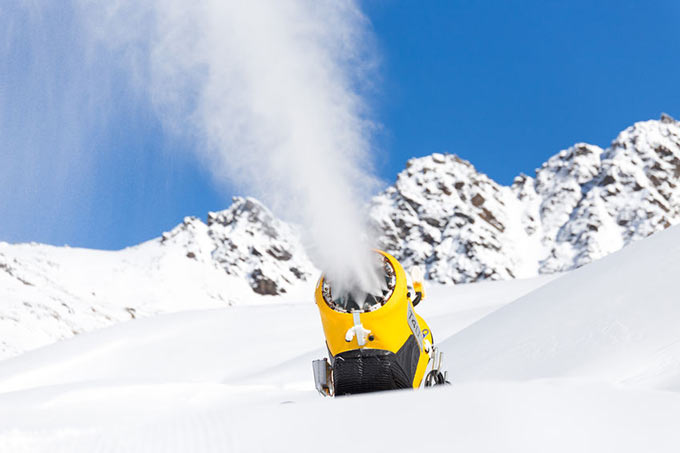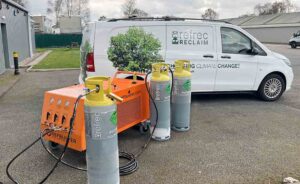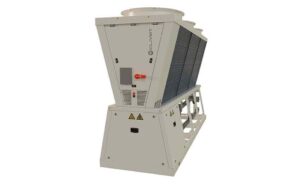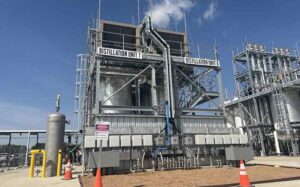Will future skiers rely on heat pumps?
15th February 2017
NORWAY: Heat pumps are being applied in new research into producing snow in an energy-efficient way, even at warmer temperatures.
Warmer weather due to climate change is having an adverse effect on the skiing industry across Europe. Traditional snowmaking makes up for a lack of snow by spraying water into cold air, and letting physics do the rest. But if temperatures are above freezing, this simply won’t work.
In response, a team of Norwegian researchers has been awarded a NOK2.3m (€260,000) grant from the Norwegian Ministry of Culture to develop a new approach to snowmaking. The project has been named, appropriately enough, Snow for the Future.
Researchers at SINTEF, Scandinavia’s largest independent research institute, and the Norwegian University of Science and Technology (NTNU) are working with heat pumps, which they think could be key to producing snow in an environmentally friendly way, even at higher temperatures.
“One of the main aims of the project will be to find out how we can produce snow regardless of the outdoor temperature, and to develop energy-efficient ways of doing it,” commented Petter Nekså, an energy research scientist at SINTEF.
Nekså thinks that one feasible approach is to develop heat pumps where the cold side can be used to produce snow, while the warm side is used for heating.
“If the air outside is cold, traditional snow cannons work very well. But these are temperature dependent,” Nekså said. “At higher temperatures, you need a refrigeration plant to make snow. The advantage is that the process is independent of air temperatures.
“What can make the process energy efficient is heating a building with the heat generated by the heat pump as it cools water to be made into snow. In this way, we can heat indoor facilities while also making artificial snow for ski slopes outside – virtually cost free.”
The approach involves adapting current heat pump technology, explained Jacob Stang, one of Nekså’s colleagues at SINTEF.
“A traditional snow production facility that makes snow at zero degrees outdoors has no ‘hot side’. That means we need a heat pump that has the properties of a refrigeration plant. We have to adapt components, such as an evaporator and condenser, to get them to work together.”
The project will be conducted in collaboration with the city of Trondheim, where SINTEF and NTNU are based, and the Norwegian Ski Federation (NSF).
“The challenges posed by climate change represent perhaps the greatest threat to ski sports. This is why we’re very pleased that this project is taking off,” said Marit Gjerland, who is a ski run consultant for the NSF. “Good results from the project will mean a lot for the future of ski sports.”
She says the technology could also expand the popularity of skiing, by making snow available in places where it previously wasn’t.
“Just like we have artificial football pitches, we could also create future snow parks,” she said.
The researchers are also hoping to develop better ways of storing snow, which is an approach many ski areas use as a hedge against warmer temperatures.
Currently, many ski area use sawdust to store artificial snow that can be spread on slopes and trails when the weather doesn’t deliver the white stuff on its own. While this is a proven approach, over time the sawdust loses its insulating properties and has to be replaced.
One of the aims of the project is to establish a snow technology research centre based in Trondheim, where both Norwegian and international projects could be carried out.
“We envisage the development of more efficient refrigeration plants and snow production concepts, facilities designed for combined snow and heat production, and a total concept that integrates data models with meteorological data,” said Trygve M Eikevik, a professor in NTNU’s Department of Energy and Process Engineering.


